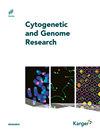Revealing the satellite DNA content in Ancistrus sp. (Siluriformes: Loricariidae) by genomic and bioinformatic analysis.
IF 1.3
4区 生物学
Q4 CELL BIOLOGY
引用次数: 0
Abstract
Introduction Eukaryotic genomes consist of both single and repetitive sequences, including Satellite DNAs (satDNA), which are non-coding sequences arranged in tandem arrays. These sequences play a crucial role in genomic functions and innovations, influencing processes such as nuclear material maintenance, heterochromatin formation, and sex chromosome differentiation. In this genomic era, advancements in next-generation sequencing and bioinformatic tools have facilitated the comprehensive cataloging of repetitive elements in genomes, particularly in non-model species. This study focuses on the satellitome of Ancistrus sp., a diverse fish species within the Loricariidae family. The genus Ancistrus displays significant karyotypic evolution, with deviations from the ancestral diploid number. Methods Using bioinformatic approaches, we identified 40 satellite DNA families in Ancistrus sp., constituting 5.19% of the genome. The abundance and divergence landscape analysis revealed diverse profiles, indicating recent amplification and homogenization of these satDNA sequences. Results The most abundant satellite, AnSat1-142, constitutes 2.1% of the genome, while the least abundant, AnSat40-52, represents 0.0034%. The monomer repeat length ranges from 16 to 142 base pairs, with an average length of 61 bp. These findings contribute to understanding the genomic dynamics and evolution of satDNAs in Ancistrus sp. Conclusion The study underscores the variability in satDNAs among fish species and provides valuable insights into the chromosomal organization and evolution of repetitive elements in non-model organisms.通过基因组学和生物信息学分析揭示Ancistrus sp.
引言 真核生物基因组由单一序列和重复序列组成,其中包括卫星 DNA(satDNA),即串联排列的非编码序列。这些序列在基因组功能和创新中发挥着至关重要的作用,影响着核物质维持、异染色质形成和性染色体分化等过程。在这个基因组时代,新一代测序技术和生物信息学工具的进步促进了对基因组中重复性元件的全面编目,尤其是在非模式物种中。本研究的重点是鳉科鱼类 Ancistrus sp.的卫星组。Ancistrus 属显示出显著的核型进化,偏离了祖先的二倍体数量。方法 利用生物信息学方法,我们在 Ancistrus sp.中发现了 40 个卫星 DNA 科,占基因组的 5.19%。丰度和差异景观分析显示了不同的特征,表明这些卫星 DNA 序列最近被扩增和同质化。结果 含量最高的卫星 AnSat1-142 占基因组的 2.1%,含量最低的卫星 AnSat40-52 占基因组的 0.0034%。单体重复长度从 16 到 142 个碱基对不等,平均长度为 61 bp。这些发现有助于理解 Ancistrus sp.中 satDNAs 的基因组动态和进化。 结论 该研究强调了鱼类物种之间 satDNAs 的变异性,并为非模式生物染色体组织和重复元件的进化提供了宝贵的见解。
本文章由计算机程序翻译,如有差异,请以英文原文为准。
求助全文
约1分钟内获得全文
求助全文
来源期刊

Cytogenetic and Genome Research
生物-细胞生物学
CiteScore
3.10
自引率
5.90%
发文量
25
审稿时长
1 months
期刊介绍:
During the last decades, ''Cytogenetic and Genome Research'' has been the leading forum for original reports and reviews in human and animal cytogenetics, including molecular, clinical and comparative cytogenetics. In recent years, most of its papers have centered on genome research, including gene cloning and sequencing, gene mapping, gene regulation and expression, cancer genetics, comparative genetics, gene linkage and related areas. The journal also publishes key papers on chromosome aberrations in somatic, meiotic and malignant cells. Its scope has expanded to include studies on invertebrate and plant cytogenetics and genomics. Also featured are the vast majority of the reports of the International Workshops on Human Chromosome Mapping, the reports of international human and animal chromosome nomenclature committees, and proceedings of the American and European cytogenetic conferences and other events. In addition to regular issues, the journal has been publishing since 2002 a series of topical issues on a broad variety of themes from cytogenetic and genome research.
 求助内容:
求助内容: 应助结果提醒方式:
应助结果提醒方式:


